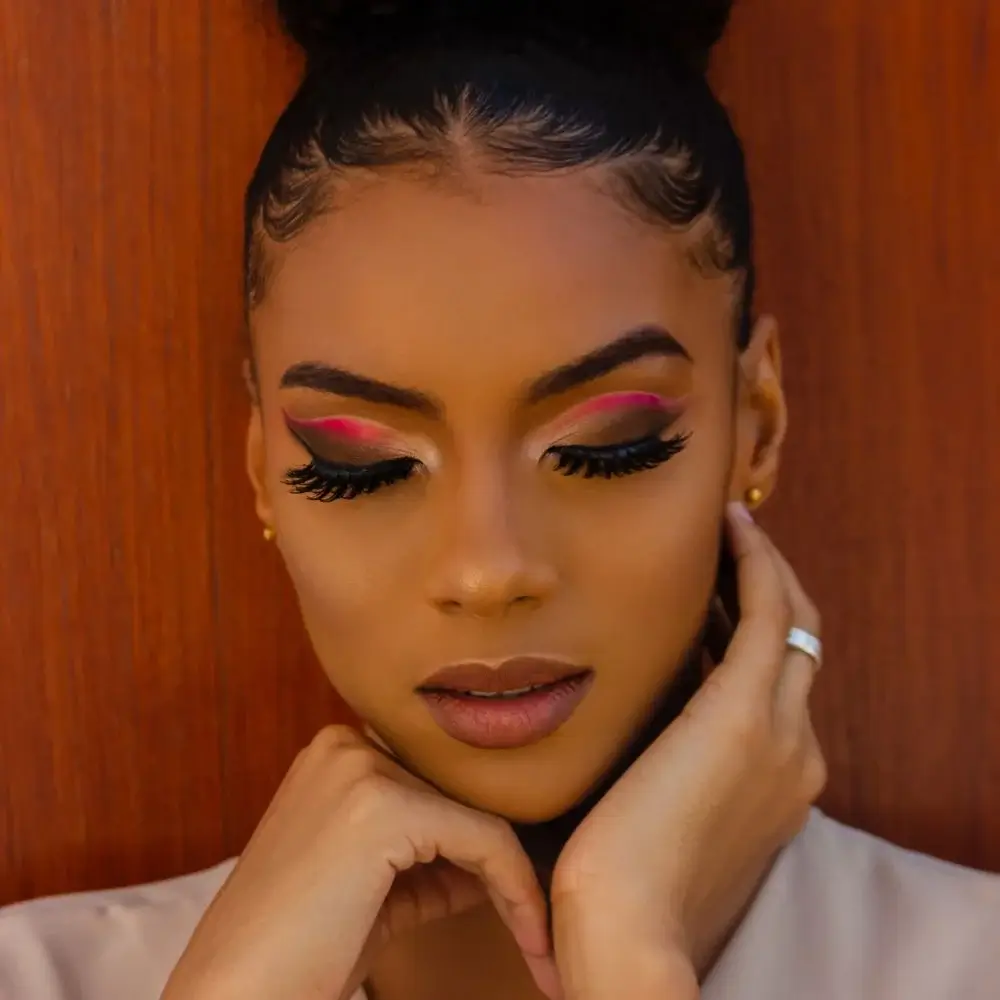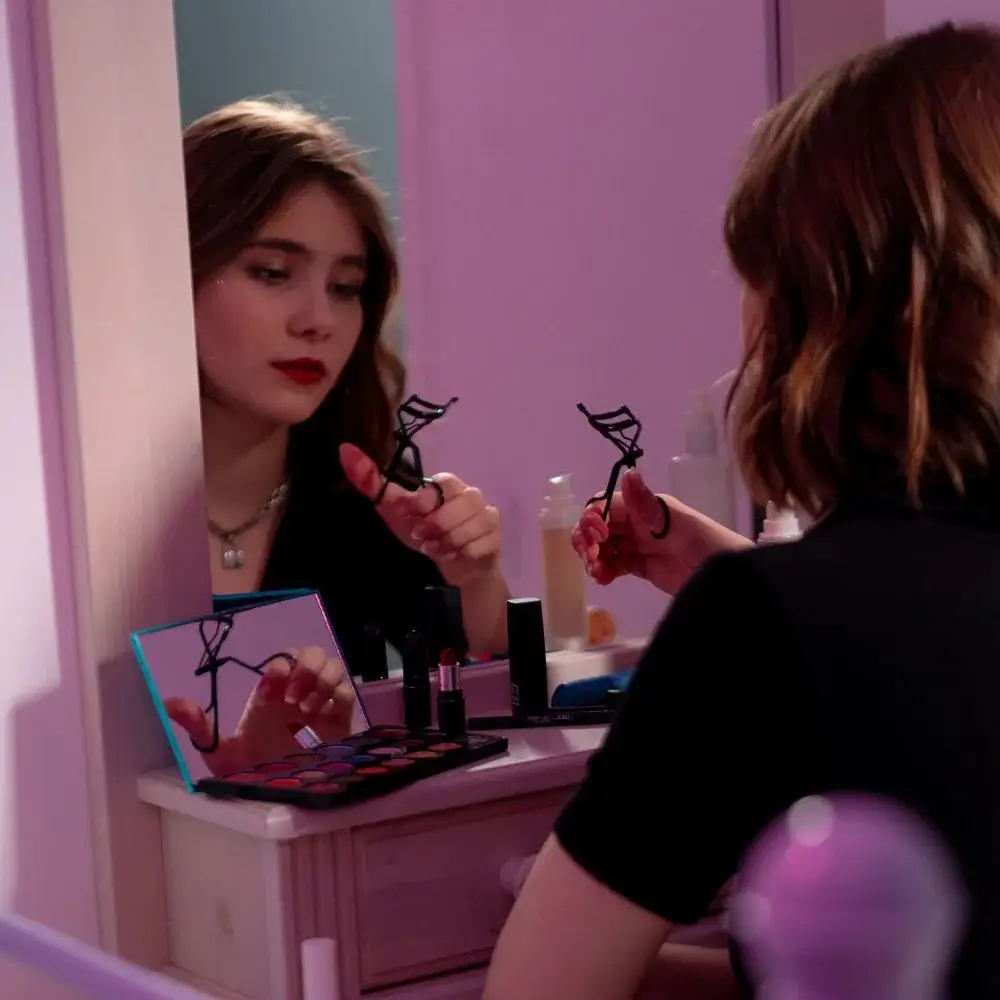Eyelash extensions are a popular beauty trend that adds volume and length to your lashes. The process involves attaching individual eyelash extensions to natural lashes using a unique adhesive. However, as much as we love our falsies, there comes a time when we need to take them off. When that time comes, knowing how to dissolve eyelash extension glue properly is essential. In this blog post, we'll give all the beauty lovers out there a comprehensive guide on how to safely and effectively remove lash extensions.
Choose the best adhesive remover.
There are different types of adhesive removers available in the market. However, not all of them are created equal, and choosing the right one can make a big difference in how easily and quickly you can remove your lash extensions. Always read the product label and look for remover formulas specifically formulated for lash extensions.
Be gentle when removing your lashes.
Eyelash extensions can be tough to remove, requiring patience and delicate handling. Avoid using excessive force or pulling on your extensions to avoid causing damage or pulling out your natural lashes. Instead, apply the adhesive remover to your lash line and let it sit for a few minutes. Once it has dissolved the adhesive, gently wipe off the extensions using a cotton swab or pad.
Use oil-based products to help dissolve the glue.
Oil-based products are one of the most effective ways to dissolve your eyelash extension glue. Oils such as coconut oil, olive oil, and baby oil can soften and dissolve the adhesive, making it easier to remove your extensions. Apply a generous amount of oil to your lash line and let it sit for a few minutes before wiping off your extensions with a cotton swab.
Schedule a professional removal session.
If you're not confident in removing your lash extensions on your own or having difficulty removing them, it's best to schedule a professional removal session. Lash artists have the tools, expertise, and experience to safely and effectively remove eyelash extensions. They can also inspect your natural lashes for any damage or breakage and offer advice on caring for them after removal.
Take care of your natural lashes after removal.
After removing your eyelash extensions, give your natural lashes a little TLC. Avoid wearing eye makeup or mascara for a few days to allow your lashes to rest and recover. Use a lash serum or oil to nourish and condition your lashes to promote growth and strength. Remember always to handle your lashes with care to prevent any damage in the future.
Dissolving eyelash extension glue can be easy and safe if done correctly. As beauty lovers, we understand the importance of having healthy and beautiful lashes, so it's essential to treat them with care during removal. By following these tips, you can remove your eyelash extensions safely and effectively without causing any damage to your natural lashes.
Beauty lovers know the importance of finding the best eyelash extension glue. Lucky for you, we've done the research and found the best of the best. Thanks to our trusted beauty editors, we've compiled a list of the top-tier eyelash extension glues on the market just for you. Say goodbye to pesky falls and uneven lines with the help of our hand-picked selections. Ready to take your lash game to new heights? Click the link now to find your next favorite best eyelash extension glue!
What is the best way to remove eyelash extension glue?
To safely remove eyelash extension glue, it is recommended to use a specialized adhesive remover explicitly designed for this purpose. Apply a small amount of the remover to a microfiber brush or cotton swab and gently work it onto the base of the extensions. Allow the remover to sit for a few minutes to dissolve the adhesive, then carefully slide the extensions off using tweezers. Avoid pulling or tugging on the lashes to prevent damage. Afterward, cleanse the area with a mild oil-free cleanser and rinse thoroughly.

What are the potential side effects of using eyelash extension glue?
While eyelash extension glue is generally safe when used correctly, some individuals may experience allergic reactions or irritation. Potential side effects can include redness, itching, swelling, or discomfort around the eyes. In rare cases, individuals may develop more severe reactions such as eyelid swelling or conjunctivitis. To minimize the risk of adverse effects, a trained professional must ensure the proper application and use of high-quality, hypoallergenic adhesive products. If any unusual symptoms occur, it is advised to consult a healthcare professional promptly.

What is eyelash primer's role in applying eyelash extension glue?
Eyelash primer is crucial in preparing natural lashes for eyelash extension application. It helps remove oil, dirt, and residue from the lashes, creating a clean surface for the adhesive to bond effectively. Besides, the primer promotes better adhesion by balancing the pH level of the natural lashes. Before applying for the extensions, a small amount of primer is typically brushed onto the lashes using a disposable mascara wand. This step enhances the longevity and retention of the extensions, ensuring a more secure and long-lasting bond between the natural and synthetic lashes.

How do I clean and maintain eyelash extension glue tools?
Proper cleaning and maintenance are essential to maintain the quality and effectiveness of eyelash extension glue tools. After each use, wipe the tools, such as tweezers and adhesive rings, with a lint-free cloth or alcohol wipe to remove any residual adhesive. It is essential to ensure that no adhesive residue remains on the tools, as this can affect future applications. Store the tools in a clean, dry place to prevent contamination. Regularly inspect the tools for wear or damage, and replace them as needed to maintain optimal performance.

How can I troubleshoot common issues with eyelash extension glue application?
Several common issues can arise during eyelash extension glue application, but troubleshooting them can help achieve better results. If the glue is drying too quickly, consider using a slower-drying adhesive or adjusting the humidity levels in your workspace. If the glue is not bonding correctly, ensure the natural lashes are clean and residue-free. In case of excessive fumes or irritation, evaluate the ventilation in your work area and consider using a low-fume or sensitive adhesive. If problems persist, consult a knowledgeable lash professional for further guidance and assistance.
Should I choose a fast-drying or slow-drying eyelash extension glue?
The choice between fast-drying and slow-drying eyelash extension glue depends on various factors and personal preferences. Fast-drying glue is beneficial for experienced technicians or those who prefer a quicker application process. It allows for faster attachment of the extensions and reduces the overall application time. On the other hand, slow-drying glue provides a longer working time, which can be advantageous for beginners or those who prefer a more precise and controlled application. Consider your skill level, comfort, and your client's specific requirements to determine which type of adhesive best suits your needs.







